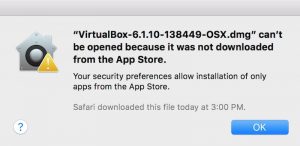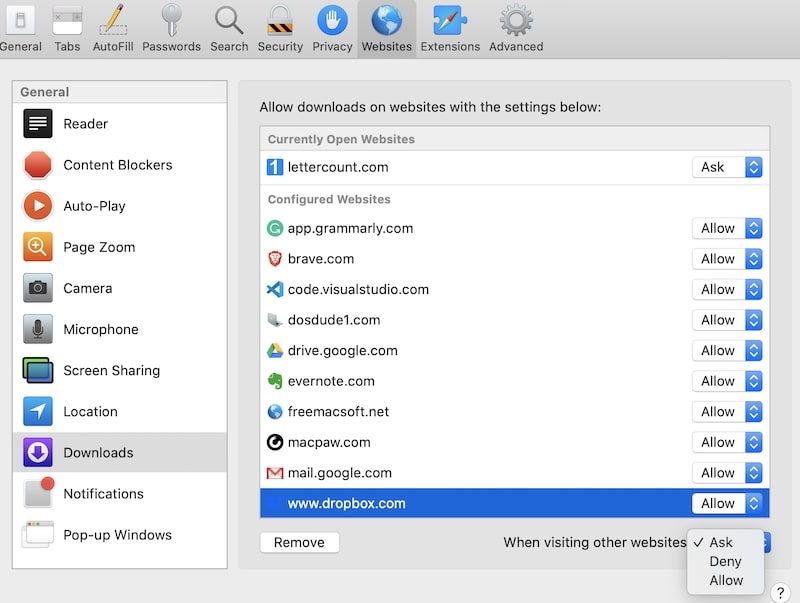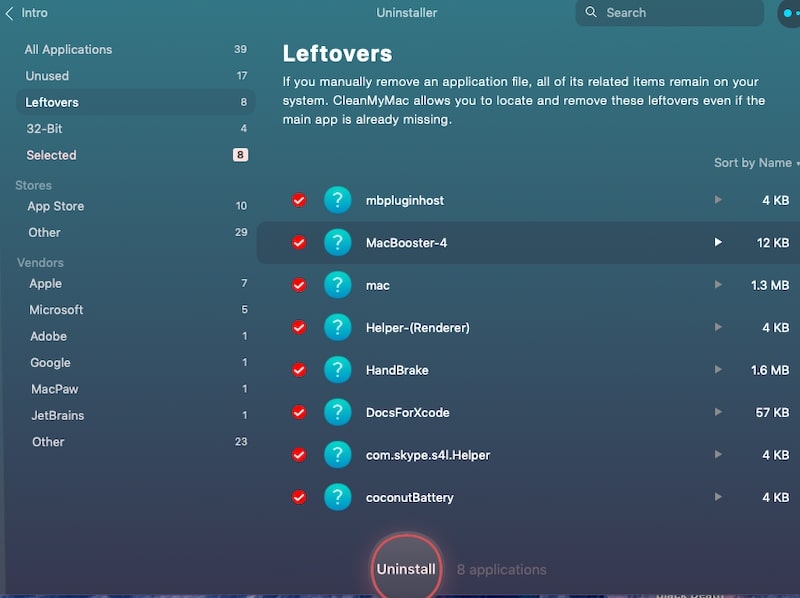How To Install Apps On Mac Not From App Store
Apple has an excellent way for developers to distribute their apps on Mac, and information technology's called the App Store.
In that location are two chief advantages to downloading apps from the App store. Kickoff, Apple tree checks all programs in its store for whatever potential threats, and so using the store guarantees that the software is safe. 2d, it is easier to install apps this way.
However, some developers chose non to have their programs in the App Store, simply instead download them from their sites. Examples of such applications are Google Chrome, Mozilla Firefox, and Adobe Photoshop.
As you lot can see, the fact that the software is not a part of the Apple App Shop does not hateful that it is harmful to your Mac. Even reputable and well-known companies chose to command how users download their software.
Unfortunately, this type of distributing software makes users work harder and have some technical skills. In this article, we volition go over the correct ways of downloading third-political party apps on Mac.
To install software that was not downloaded from the Mac app shop first switch from the "App Store" choice to "App Shop and identified developers" in Security & Privacy Organization Preferences. Then click on the "Open Anyway" button side by side to the proper name of the app when the installation starts.
This was a short version. Read the more detailed, step by step, the version beneath.
Allow identified developers in Security & Privacy
By default, Mac allows the states to install only from its app store, and so we need to change the Security and Privacy options through the System Preferences app.
There are multiple ways to start the app and the first one using the LaunchPad above.
- Offset LaunchPad from the Dock and click on System Preferences.
- Observe and click on the Security and Privacy icon.
- Now, click on the padlock icon at the bottom left corner of the window.
- The Mac volition ask to either enter the Admin password or if you lot accept a newer MacBook to use the Touch ID.
- After that, y'all tin can switch from the "App Store" to "App Store and identified developers" option under "Permit apps downloaded from" department.

There used to be an "Allow anywhere" selection before, but information technology was removed in macOS Sierra, so in modern Macs, it is not bachelor anymore.
If there is no LaunchPad in the Dock, so you can access the app from the Apple carte du jour. Click on the Apple logo in the top left corner of the screen. In the drop-downwardly menu, click on System Preferences. And so change the option.
A 3rd approach is my favorite. Beginning Spotlight Search by using Command+infinite key combination. In the search bar, you lot can type the proper noun of the app, or even the part of it. For example, if y'all type Security & Privacy and select the item from search results, it will open the window in the correct context.
Allow browser to download software from Cyberspace
Another hurdle with downloading software from the Cyberspace is browsers. In their effort to protect users, browsers such as Safari and Google Chrome disallow downloading executables.
If Safari does not allow you download stuff, change the permissions as follows.
- Launch Safari.
- In the carte du jour bar, click on Safari -> Preferences or apply Command+comma key combination.
- Click on the Websites tab.
- In the bottom right corner, modify the setting for "When visiting other websites" to Ask.
Also, sometimes, sure websites can be prohibited from downloading. If this has happened to you, review the sites in the listing, and change the setting from Deny to Inquire.

Now, yous are set up for download. If the Safari preferences were correctly installed, then when you click on the download link, the Mac will pop up a message and ask permission.
If you are using browsers other than Safari, check their help in case they do not allow downloads.
Locate the software installation package
Once the download starts, the download progress tin can be tracked by clicking on Show Downloads icon in the Safari toolbar.
When the download finished, you can open the downloaded file in the Finder.
If the history of downloads was cleared, the file is most likely to be in the Downloads folder on Mac.
If the file is not there, then check if the default Downloads location was changed. The Downloads location can be changed from Safari Preferences under the General tab.
Now, yous are ready to execute the app. But first, there is ane very important step you need to practice.
Check the install media for viruses
Every bit mentioned above, 1 of the advantages of the App Store is that Apple tree guarantees that anything there is rubber, no viruses, no malware. When downloading programs from the Cyberspace, you are doing it at your ain risk.
Fifty-fifty reputable web sites can exist hacked, and the downloads tin be injected with malware.
So, remember, always check whatsoever executable for malware.
Ane way to check malware is to upload it Virus Full spider web site. Virus Total is a group initiative by dozens of antimalware vendors. They run anything you upload at that place through their malware scanners and report.
If they report that no malware was found, so it is safe to utilise. Withal, if some of them flag the package, then I would avoid running it on my Mac.
While Virus Full is a recommended solution, information technology does have a serious problem. The file size is limited to 550MB. Information technology is a pretty loftier limit, only if you need to test a huge file, and so y'all may need to install an antivirus.
If you demand recommendations on the all-time antivirus solutions, cheque my post hither.
Launch the install media from Downloads folder
All software installs for Mac come in ii forms or two package types: DMG and PKG.
Installing with DMG
DMG stands for Disk Image, i.due east., the entire software is packaged in one file, which internally has folders and files, like a regular deejay drive.
If you double click on the dmg file, two things happen. First, the deejay epitome will exist mounted. You can come across it in the Finder under other drives.
As well, disk images have scripts that run on starting time. Usually, you lot will see something similar this.

The installation with DMG files is easy. All y'all need is to elevate the app icon from the drive to the Applications folder. Since the paradigm contains all files and folder structure, the installation is done after copying. This is the easiest and fastest way to deploy software on Mac.
The drawback of this mechanism (from the developers' standpoint) is that information technology does non allow customization. For case, it does not let us to selection a custom location or install some background services. So, sometimes developers chose another installation method.
Installing with PKG
Some developers build an install media in the form of PKG files. These are full-featured programs that allow developers to get-go to install processes in the grade of a wizard.
In this case, the program will ask a bunch of questions (which usually require to click on the Adjacent button repeatedly). This form allows more flexibility, just for yous, information technology does not matter which program to run as an end-user.
All yous need to know that in that location is no difference if the install media is in DMG or PKG format.
Click Open Anyhow button to let the app to run
At present the main part. Apple tree recognizes certain large companies as very safe. For instance, whatsoever software downloaded from Microsoft or Google is most probable safety. But Apple does not know well-nigh all developers in the earth.
And then, if y'all see a message "dmg file tin't be opened because it was not downloaded from the App Store," all you need to practice is to open Security & Privacy in System Preferences. And nether the Full general tab, click on the "Open Anyway" push button and the process volition get-go.

Allow access to Mac hardware if needed
Some applications need access to hardware or organisation folders. For case, if y'all are trying to install an antimalware solution, it volition ask for Full Disk access. If the program is a chat, it may ask for access to the camera or microphone.
Usually, programs with such demands pop upward a bulletin explaining what y'all demand to practise.
For instance, the Norton Antivirus installer volition pop up a message that information technology needs admission to the disk.
In this instance, again, you take to open Security & Privacy Preferences, then click on the padlock to enter the admin password. After that, go to the Privacy tab. In the listing of resource on the left, locate the Full Disk Admission particular.
Now, either click on the "+" icon to browse and add the plan or drag the running program into the Privacy window.
Frequently this human action volition ask to quit the running app. And then, after quitting the app, yous would have to restart it.
Uninstall unnecessary apps without leftovers
If you lot followed the steps, y'all should be able to install software without any issues.
At present, I wanted to touch on the uninstall process quickly.
Uninstalling apps on Mac is easy. Go to the Applications folder, locate the program, and apply Command+Delete key combination to send the app to Trash.
Nevertheless, this method has its problems. It merely deletes the files and folders in Applications. And since many apps create cache and temporary files in other folders, they never get removed. Over fourth dimension these files accumulate and accept space on the Mac drive.
So, I never uninstall apps past deleting them. I e'er utilise tertiary-party apps, such as CleanMyMac. For example, here, CleanMyMac identified the leftovers after I've been installing/uninstalling various apps downloaded from the Internet.

And that's all you need to know about installing programs downloaded from the Internet on Macs. I just want to re-emphasize the importance of testing all downloads for malware.
If you lot don't think that Macs tin can have viruses, read my mail service here:
I Recollect My Mac Has a Virus! What Should I Do?
Photo credit: ©canva.com/Jirsak
Source: https://macmyths.com/install-software-on-mac-not-app-store/
Posted by: hoganyouttleste.blogspot.com


0 Response to "How To Install Apps On Mac Not From App Store"
Post a Comment